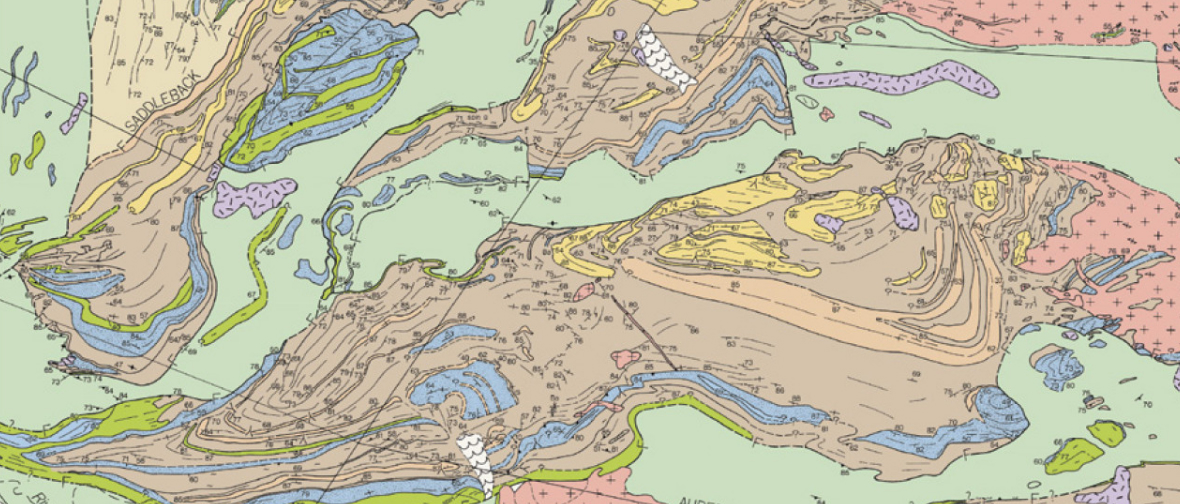Oldest evidence of earthquakes found in strange jumble of 3.3 billion-year-old rocks from Africa
Geologists have found that the rocks of the Barberton Greenstone Belt are similar to those subjected to earthquakes and landslides in New Zealand.

Scientists have found signs of some of the earliest known earthquakes in 3.3 billion-year-old rocks.
The rocks provide early evidence of plate tectonics, which explains Earth's crust as split into large plates that glide across the mantle. The rocks also point to what conditions may have been like when life first evolved.
Geologists made the discovery after investigating the Barberton Greenstone Belt, a complex geological formation in southern Africa. They realized that the belt is remarkably similar to much younger rocks in New Zealand that have experienced earthquake-triggered submarine landslides along the Hikurangi subduction zone, according to a new study, published Feb. 27 in the journal Geology.
"The energy released in these earthquakes is absolutely huge, and it shakes the whole region," lead author Simon Lamb, a geologist at Victoria University of Wellington in New Zealand, told Live Science.
Related: Oldest evidence of tectonic plates unearthed, sealed in ancient crystals
The Barberton Greenstone, named after its greenish hue, provides one of the most extensive geological records for Earth between 3.2 billion and 3.6 billion years ago, according to the study. Researchers have struggled to understand the region because the geology is messy and it's difficult to trace the rocks through the landscape.
Co-author Cornel de Ronde, a principal scientist at GNS Science, a research institute in New Zealand, published a partial map of the belt in 2021, revealing, as Lamb put it, "a gigantic jumble of blocks" detached from where they formed.
Get the world’s most fascinating discoveries delivered straight to your inbox.
Lamb noticed the geology was similar to what he had seen along the eastern side of New Zealand in 20 million-year-old rocks and more recent submarine landslides. Specifically, the Great Marlborough Conglomerate — remnants of a continental shelf that has collapsed in submarine landslides — in the Hikurangi subduction zone was strikingly similar to the bedrock of the Barberton Greenstone Belt, according to a statement released by GNS Science.
Off New Zealand, the Pacific Plate is sliding underneath and rubbing against the Australian Plate, generating huge earthquakes and submarine landslides. In these landslides, rocks that formed on land and in shallow waters fall into the deep ocean, mixing up their original positions.
The Great Marlborough Conglomerate formation could be the result of thousands of earthquakes over millions of years, with each quake shifting the largest blocks, according to the study.
"It's really a record of a prolonged period of shaking," Lamb said. "It's showing you that this is an ongoing phenomenon in the early Earth."
Earth formed around 4.6 billion years ago and then cooled to become a water world. There isn't a scientific consensus on when plate tectonics began, only that it was likely before 2 billion years ago, according to the study. Lamb believes that there were earthquakes before those interpreted in the Barberton Greenstone Belt and that they coincided with the origin of life.
Biologists aren't sure where, when or how life started on Earth, though the oldest fossils are 3.7 billion years old. But life would have needed energy to get going and likely involved water (a survival requirement).
Lamb noted that subduction zones are home to not only the largest earthquakes but also the largest volcanic eruptions, including the 2022 Hunga Tonga-Hunga Ha'apai eruption, which detonated underwater with more force than 100 Hiroshima bombs and triggered the most intense lightning storm ever recorded. He believes subduction zones created the conditions for life and allowed it to survive.
"I think that life is born of this extreme violence," he added.

Patrick Pester is the trending news writer at Live Science. His work has appeared on other science websites, such as BBC Science Focus and Scientific American. Patrick retrained as a journalist after spending his early career working in zoos and wildlife conservation. He was awarded the Master's Excellence Scholarship to study at Cardiff University where he completed a master's degree in international journalism. He also has a second master's degree in biodiversity, evolution and conservation in action from Middlesex University London. When he isn't writing news, Patrick investigates the sale of human remains.
 Live Science Plus
Live Science Plus






